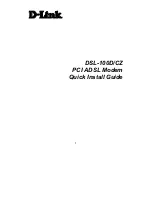
I
nstallation des TR-WMX-3.5
27
Table 2-1. Fields and Buttons in the Wireless Settings Page
Field
Description
Channel Bandwidth (MHz)
Select the value that best suits your application’s bandwidth needs and is allowed by
your license. Choices are:
•
3.5 MHz (
default
)
•
7MHz
RF Profiles
Select the duplex method that best suits your requirements. Choices are:
•
TDD mode: sets the carrier frequency for communication between the CPE
and base station. (
default
)
•
H-FDD mode: sets the carrier frequency for communication from the base
station to the CPE.
CP Size
Sets the cyclic prefix size, which helps mitigate multipath-induced signal
degradation. The setting reflects the ratio of the guard band to the signal band (i.e.,
a smaller fraction implies a larger guard band). This setting should match the CP
setting of the base station to which the device is connecting.
Choices are:
•
1/4
•
1/8
•
1/16 (
default
)
•
1/32
Secondary Management Connection
Support
Determines whether the TR-WMX-3.5 is configured for Static or DHCP Client mode.
Choices are:
•
No Secondary Management Support – unmanaged mode. This setting requires
you to set the TR-WMX-3.5 IP addresses manually. This setting makes the
Management Net Mask, and Management Route Gateway fields available on
the TCP/IP Settings page.
•
Secondary Management (Default) – Secondary managed mode. Select this
setting if the TR-WMX-3.5 IP addresses will be set automatically by a DHCP
server. This setting makes Management Net Mask, and Management Route
Gateway fields on the TCP/IP Settings page unavailable. (
default
)
Initial Ranging Burst Inverting
This feature is provided for Engineering development use, and is an undocumented
feature. Please do not change from the default selection of Software Auto.
















































